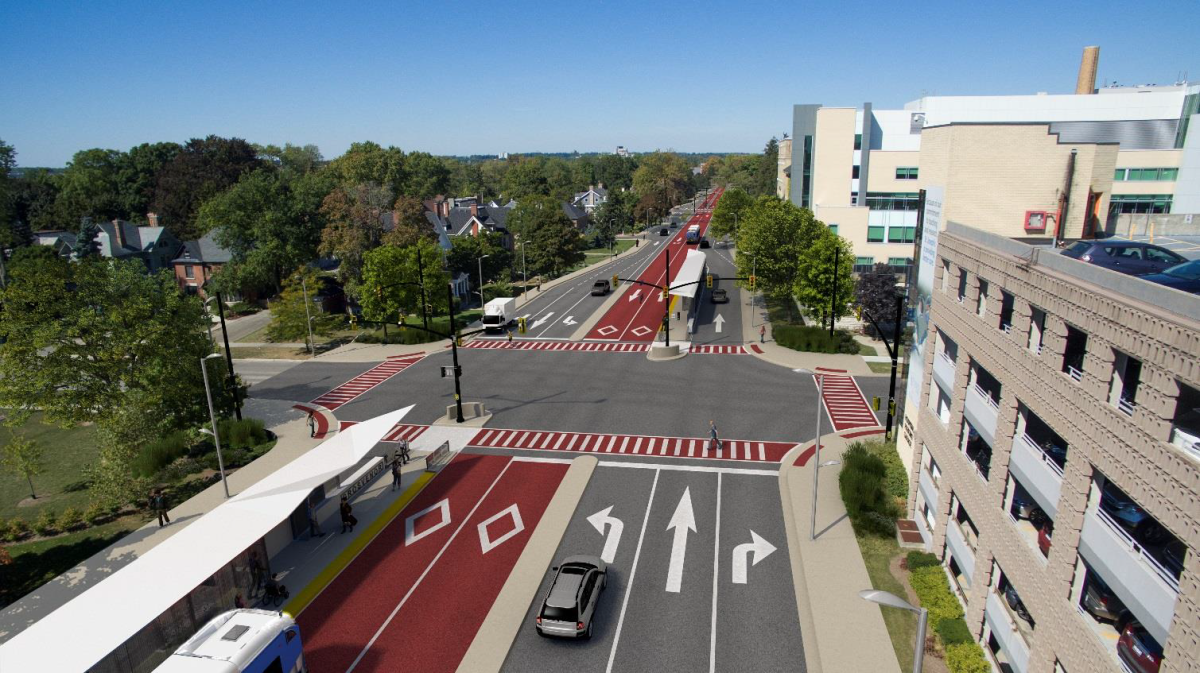City politicians have a lot of reading to do before a key vote on bus rapid transit April 23.

Shift London released the draft environmental project report on April 13, giving city councillors and transit advocates 10 days to prepare. The report says drivers along Richmond Row will feel a 90-second delay between Oxford Street and the Western University gates once BRT-only lanes are built down the middle of Richmond.
The report will be presented to the Strategic Priorities and Policy Committee on Monday before going to London city council on April 24.
If approved, the project would move on to a six-month provincially legislated technical review phase which lasts 185 days. That would take the assessment period past the Oct. 22 municipal election.
“Set it up like there are only two lanes of traffic on Richmond, and then try and do this,” said Down Shift London spokesperson, Dan McDonald.
“If you set up the street like that right now, you’ll find that a 90-second delay is extremely unrealistic,” he said.
The report suggests having two centre-running BRT lanes and two lanes for general traffic — one southbound and one northbound — will allow BRT users to get from Oxford to the University gates in six minutes.
“What about emergency vehicles and garbage trucks? Isn’t this just going to create a bigger mess?” McDonald asked.
The report also highlights the recommended designs and the impact BRT would have on traffic outside of the suggested routes — for example, suggesting most drivers would take Western Road or Adelaide instead of Richmond.
“But they don’t talk about traffic cutting through Waterloo, Maitland, or Colborne, or into the heart of Old North,” McDonald said.
“They just think cars are going to pop down to Adelaide, and the roundabout or overpass over the railway will suddenly appear out of nowhere,” he said.
Coun. Stephen Turner, however, stresses the difference between speculation and science.
“Speculation says, ‘Oh, we’re not quite sure. We have a lot of doubts. We think it’s going to cause a lot of problems.’ How could reducing the number of lanes from four to two not cause a lot of problems?'” Turner noted.
Turner also noted that there is a lot of investor confidence in the project that can already be felt across the city.
The report says an estimated uplift in land value in the order of $90 million could be realized along the proposed BRT corridors if the city grows as anticipated.
“The average uplift in land value along the corridors is anticipated to range from 2 per cent to 10 per cent,” the report states.
To establish the transit network, the city will need to acquire hundreds of properties, a process which has already begun.
The report states that during the development of the preliminary engineering design, about 525 properties were identified as having impacts, ranging from full acquisition to front or side-yard impacts.
The data includes details on air and stormwater quality, noise and vibration assessments, traffic analysis and micro-simulation report, data from public consultations, and more.








Comments